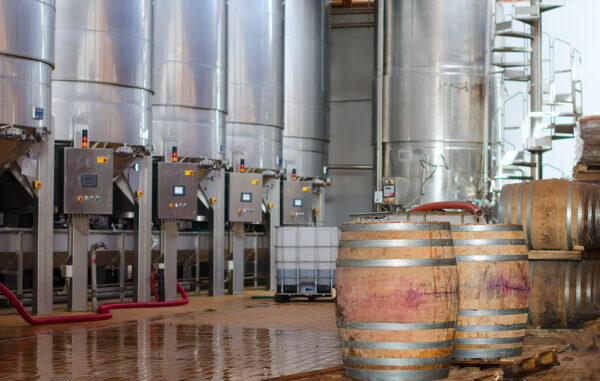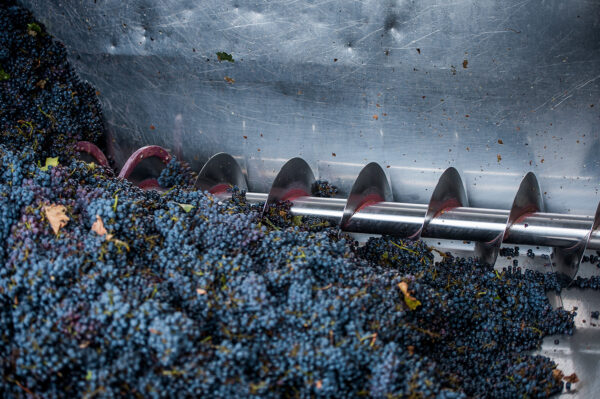Cannabis Terpenes in Wine?
Recently, the cannabis industry has been beset by claims from vineyards and other agricultural interests that “terpene drift” and “terpene taint” from cannabis risks harming grapes and affecting the taste of wine. This often represents a clash between legacy agriculture (vineyards) and new upstarts (cannabis cultivators) in regions traditionally associated with wine.
However, despite the vocal fear-mongering around supposed harm from “terpene taint” and “terpene drift,” scientific consensus accepts that cannabis terpenes present no such risk. In fact, rigorous studies have shown that proximity to hemp or cannabis presents no detectable hemp or cannabis terpenes on vineyard grapes. In general, cannabis plants produce a solid resin that cannot be airborne and emitted gaseously.
Eucalyptol in Wine: The Origin of the Terpene Drift Fear
Much of the “terpene drift” fear mongering grew from an Australian study about alleged grape contamination from Eucalyptus trees. However, many experts believe that grape contamination from eucalyptus terpenes, like eucalyptol, results from the presence of eucalyptus leaves in grape harvests, and not from any proximity between grape vines and eucalyptus trees.
Other research has also suggested a chemical pathway, whereby the terpene eucalyptol (1,8-cineole) can be produced by chemical transformation of terpenes like α-terpineol already found in wine grapes during the fermentation process. In other words, wine can have eucalyptus terpenes even when the wine grapes were not grown in the vicinity of eucalyptus trees.
US Courts Establishing Legal Precedents
Despite the many claims, United States Courts have started establishing legal precedent that cannabis presents no contamination threat to grapes. Courts in multiple jurisdictions have affirmed the conclusion that cannabis proximity presents no risk to grapes, including an Oregon state court judge who ruled that a vineyard could not prove any harm from its proximity to a commercial cannabis grow. In this case, Smera Vineyards LLC et al. v. Steven Wagner et al., 17CV15941, an Oregon court found “there is insufficient proof at this time by a preponderance of the evidence that [proximity to a marijuana farm] will damage plaintiffs’ current or future agricultural products.”
A Case Study from the County of Santa Barbara, California
California Courts have started reaching similar conclusions. In a recent ruling in a California lawsuit, Santa Barbara Coalition for Responsible Cannabis, Inc. v. County of Santa Barbara, et al. (Case #20CV01736), the Court provided an opinion with strong language favoring cannabis companies. In denying a claim by an agricultural coalition that Santa Barbara County had failed to assess sufficiently the potential environment impacts of a cannabis project under the California Environmental Quality Act (“CEQA”), the Court found that Santa Barbara County’s environmental review and zoning permit for a cannabis cultivation project complied fully with state laws and County land-use policies.
The Court rejected CEQA claims based on assertions that Santa Barbara County failed to consider or address the impacts of the burgeoning cannabis industry on vineyards, orchards, and row crops. In reaching this decision, the Court found that the potential harm to wine grapes from “terpene taint” was outside the scope of state environmental law. In his ruling, the judge found that evidence of “terpene taint” on wine grapes from the smelly gasses of cannabis was only “speculative”. The judge went on to dismiss “terpene drift” and note that “speculation is not substantial evidence,” and acknowledged studies by the cannabis company showing that “no terpenes could be detected outside of the boundaries of the property.” These strong words can provide comfort to cannabis companies that California Courts will not look kindly on claimed damages from supposed “terpene drift” and “terpene taint”.
In Conclusion: Fighting Back Against Baseless Claims of Cannabis Terpene Drift
It is important for any cannabis business to analyze environmental issues and potential liabilities before and throughout the process of developing a cannabis project. This may require evaluating and implementing proper odor mitigation and air filtration measures, and communicating with local jurisdictions and neighbors about “terpenes” and the lack of evidence supporting theories of terpene drift. The attorneys at Rogoway Law have extensive experience evaluating, analyzing and addressing the legal issues related to “terpene drift,” “terpene taint” and CEQA. We are prepared to help you fight back against baseless allegations of cannabis terpenes damaging wine grapes or other crops.


